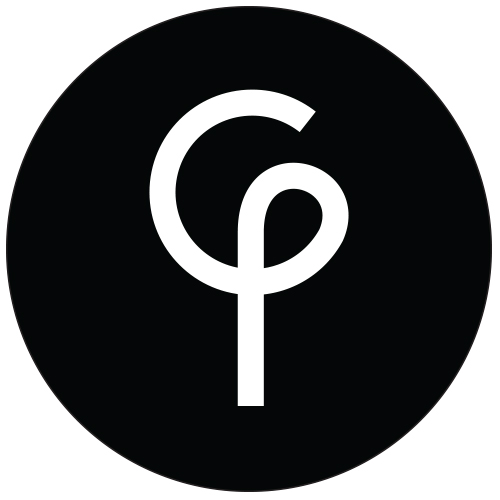INTUIGRAMS
Like ideograms, Intuigrams express a visual language. However, they symbolize intuitions instead of ideas. The language of the Intuigram is timeless and boundless, "spoken" and "written" by every creature in nature. This language lives in in our very cells, it is the trace left by intuition from the micro to the macro and as such, becomes the code of recurrent intuitions.
I have recorded these Intuigrams in notebooks to begin with and little by little they are emerging and multiplying, materializing themselves in different works and mediums. Keeping faithful to the principle behind them, I am conscious of remaining fluid, letting them make themselves as much as possible, and trying to avoid extra noise and information that tends to create ideas and mental chatter.
This is an attempt of giving a visual presence to the language of intuition and each Intuigram is a material manifestation of the intuitive plane. By the materiality of this new alphabet of sorts, there is a reminder of the symmetry, the structural sense, the proportions and the metaphors of the stream that is intuition; it's characters narrate a path. They come to be symmetrical or asymmetrical, sometimes self-similar, growing as a repetition of fractals in which each element that forms the single Intuigram is a smaller expression of the larger whole which is in turn, an expression of it's smallest parts. Within this containment and circularity there is dynamic complexity and plasticity.
They began as two dimensions but have jumped into three and four dimensional planes... and the other way around. Some of them are clear shapes in black and white, borrowing from the traditional appearance of the written word and from the ancient Taoist symbol of Yin and Yang; a circle that unites opposites, coexisting without superiority or judgment but simultaneously, in a holistic way, reciprocal. Like the Yin and Yang, the make-up of some Intuigrams is the binary balanced as a whole.
The making of each Intuigram is in constant dialogue with the void or space that surrounds it, choosing directions and turns, reacting to subtle shifts of being.
cp
[ Notes from The Intuigrams Notebooks. Claudia Paneca ]
Paneca coined the word “Intuigrams”, for a series of abstract works that were initially sketched in notebooks. As the etymology of the word suggests Intuigrams is a conjunction of “Intuitions” and “gram” that refers to graphic signs. Paneca’s Intuigrams are poetic attempts to develop images that could take intuitions into the realm of signs. She points to a series of psychological experiences that so far lack of signs to name them or describe them.
Ernesto Menendez Conde / October 2012
Los Intuigramas de Claudia Paneca
por Ernesto Menendez Conde
Las esculturas en pequeño formato, instalaciones, dibujos y fotografías de la artista cubana Claudia Paneca hacen pensar en vestigios de un mundo anterior a la escritura o la historia: herramientas de trabajo, amuletos, restos fósiles, vertebras o cajas torácicas. Son formas irregulares y dotadas de una inusual simplicidad, provistas de porosidades, de hendiduras, de incisiones. Superficies pulimentadas o sobre las que la artista en ocasiones imprime sus huellas dactilares. Materias erosionas o desgastadas, sobre las que supuestamente, alguna vez, un ser humano dejó la constancia de un instante. No obstante basta reparar en los materiales de las obras (porcelana, arcilla blanca, plexiglass, hydrocal) para advertir que no se trata en modo alguno de imitaciones de un pasado pre-histórico, sino más bien de construir ficciones contemporáneas destinadas a explorar zonas de la sensibilidad –y yo agregaría, más específicamente, de la sensibilidad femenina- que sería difícil, cuando no insuficiente, expresar con palabras.
El pasado prehistórico funciona más bien como un referente visual que permite evocar formas abstractas y al mismo tiempo sensuales, alusivas a la fecundidad, al goce sexual, al roce de una superficie -o al propio gesto de hundir los dedos sobre la arcilla húmeda- en lo que poseen de primigenio, intuitivo e irrepetible.
Expuestas sobre pedestales, sobre mesas, junto a páginas manuscritas, dentro de cajas de plexiglass, como si se tratase de hallazgos arqueológicos, las piezas, vistas en su conjunto, ofrecen el efecto de un diario íntimo. Paneca propone el vocablo intuigrama, conjunción de intuición y signo gráfico (en el mismo sentido en que la palabra ideograma se refiere a un signo visual que representa una idea). Solo que los intuigramas de Paneca construyen formas visuales cuyo referente icónico no es en modo alguno explícito. Más que significar, sugieren y son esencialmente intraducibles –o mejor dicho, indescifrables- y desprovistos de códigos de lectura. Cabe poner en duda la condición sígnica de sus intuigramas. El espectador debe contentarse con saber que se trata de tentativas, más o menos apoyadas en ficciones, por convertir eso que vagamente experimentamos como intuiciones en imágenes visuales.
Los intuigramas son asociaciones entre formas geométricas, frecuentemente zigzagueantes, y materias orgánicas, como la madera, que la artista se limita a ubicar dentro de la obra, como si fuesen objets trouvés.
Ante los trabajos de Paneca posiblemente convenga hablar de un conjunto de piezas, de una instalación donde los fragmentos parecen dialogar y proponer analogías poéticas: un frijol guarda un parentesco visual con el cerebro humano, como si uno y otro fuesen embriones, unas formas abstractas pueden verse indistintamente como vaginas, anzuelos, larvas u organismos microscópicos. // March 2015
INTUIGRAMS PROJECT. 2010. Intuigrams Series | Intuigrams Notebooks
cp studio

